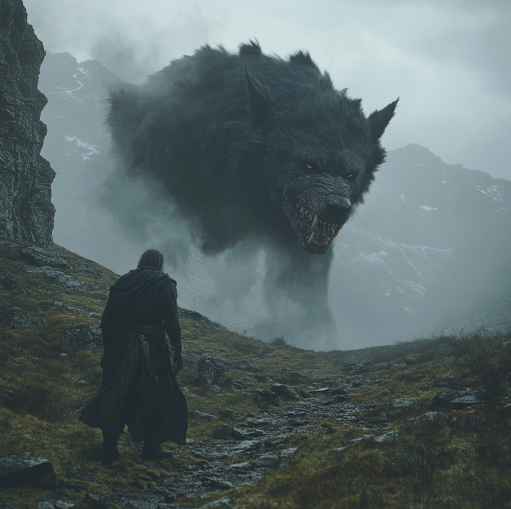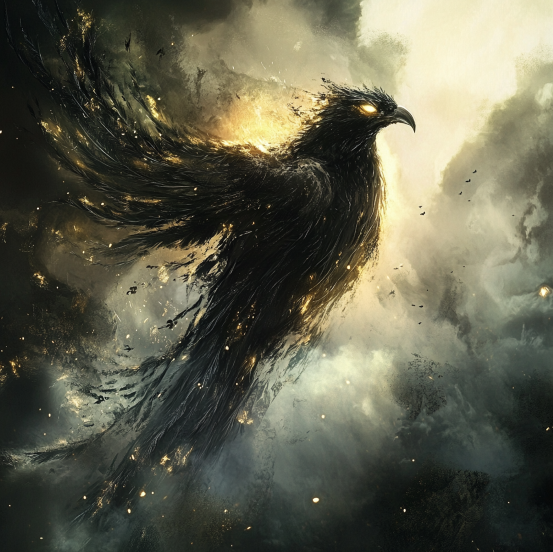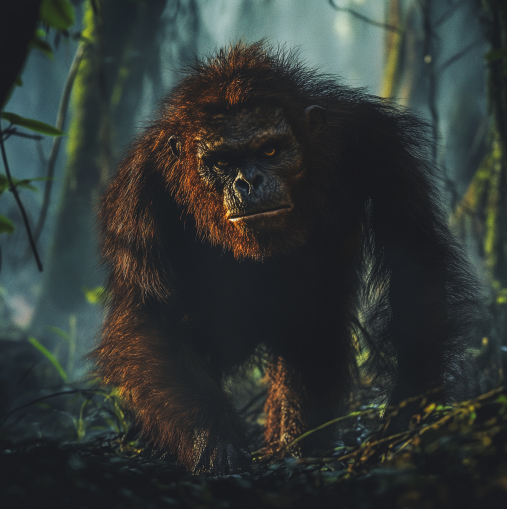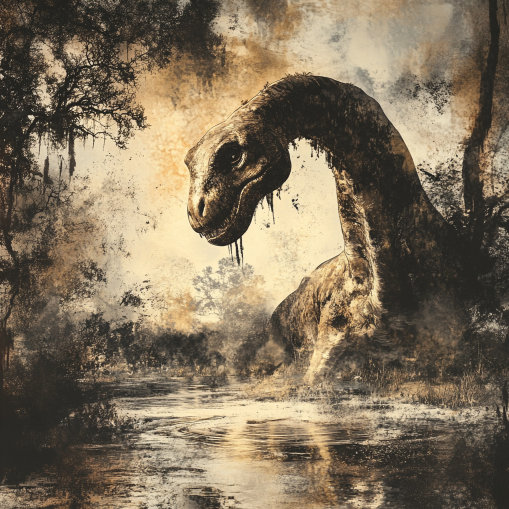Cryptids are creatures whose existence is debated, often considered to lie on the fringes of reality and myth. These mysterious beings hold a significant place in folklore and culture, captivating imaginations around the globe.
From the elusive Bigfoot in North America to the enigmatic Loch Ness Monster in Scotland, cryptids often serve as the embodiment of the unexplained, offering a glimpse into the unknown.
To truly understand the allure of cryptids, consider the tale of the infamous Bigfoot sighting by the Patterson-Gimlin film in 1967. This short clip, capturing what many believe to be Bigfoot himself, sparked a frenzy that transcended borders and decades.
The footage, though grainy and often criticized, continues to ignite debates and inspire countless expeditions, demonstrating the powerful hold these creatures have on our collective curiosity.
In a world increasingly driven by science and facts, the belief in cryptids remains surprisingly robust. According to a recent survey, approximately 30% of people worldwide believe in the existence of one or more cryptids. This statistic underscores the enduring human fascination with the mysterious and the unknown, a theme that permeates cultures across continents.
- North America: Home to Bigfoot, with numerous sightings reported each year.
- Europe: The Loch Ness Monster continues to intrigue with its alleged appearances.
- Asia: The Yeti, often sighted in the Himalayas, remains a subject of intense scrutiny.
- Africa: Stories of the Mokele-Mbembe, a dinosaur-like creature, persist in local folklore.
- Australia: The Yowie, akin to Bigfoot, is rumored to roam the bushlands.
The allure of cryptids lies not only in the creatures themselves but in the stories, legends, and myths that surround them.
These tales are woven into the fabric of cultural identity, inviting both skepticism and wonder. As we delve into the world of cryptids, we embark on a journey through the corridors of imagination and the whispers of history.

The Most Famous Cryptids by Region
Cryptids are as diverse as the regions they inhabit, each with unique stories that capture the imaginations of locals and enthusiasts alike. Let’s embark on a global tour to discover some of the most famous cryptids by continent.
- North America:
- Bigfoot: Known as Sasquatch, this ape-like creature is said to dwell in the forests. Notable sightings include the Patterson-Gimlin film in 1967.
- Jersey Devil: A legendary creature from the Pine Barrens of New Jersey, described as a flying biped with hooves.
- South America:
- Chupacabra: Known for draining the blood of livestock, this cryptid has been reported in Puerto Rico and across Latin America.
- Mapinguari: Alleged to be a giant sloth-like creature, it roams the Amazon rainforest.
- Europe:
- Loch Ness Monster: Often called “Nessie,” this cryptid is rumored to inhabit Loch Ness in Scotland, with sightings dating back to the 6th century.
- Beast of Bodmin Moor: A phantom wildcat reported in Cornwall, England, sparking debates over its existence.
- Asia:
- Yeti: Also known as the “Abominable Snowman,” it has been sighted in the Himalayan regions.
- Mongolian Death Worm: A legendary creature that supposedly inhabits the Gobi Desert, feared for its deadly venom.
- Africa:
- Mokele-Mbembe: Believed to be a dinosaur-like creature residing in the Congo River Basin.
- Nganga: A mysterious beast said to roam the savannas of Kenya and Tanzania.
- Australia:
- Yowie: Australia’s answer to Bigfoot, this creature is reported to inhabit the Outback.
- Bunyip: A mythical water creature said to lurk in swamps, billabongs, and riverbeds.
“Cryptids are not just stories; they are an integral part of our global tapestry, weaving together culture, science, and mystery.” – Dr. Emily Carter, Cryptozoologist
These captivating creatures continue to inspire research, folklore, and even tourism, reminding us of the world’s endless mysteries and the stories we tell to make sense of them.
North American Cryptids
North America is a land rich with tales of mysterious creatures roaming its expansive landscapes. Among these cryptids, none capture the imagination quite like Bigfoot and the Loch Ness Monster. Let’s delve into these legendary beings and explore their enduring presence in popular culture.
Bigfoot
Bigfoot, also known as Sasquatch, is an ape-like creature that is said to inhabit the forests of North America. Its legend has been fueled by numerous sightings, eyewitness accounts, and intriguing pieces of evidence.
- Key Sightings:
- Patterson-Gimlin Film (1967): This iconic footage, captured in Bluff Creek, California, remains one of the most famous pieces of evidence supporting Bigfoot’s existence.
- Skookum Cast (2000): A large body print found in Washington State that some believe could belong to Bigfoot.
- Cultural Impact:
- Bigfoot has become a staple in American folklore, inspiring countless books, documentaries, and movies.
- The creature has generated significant tourism, with festivals and tours dedicated to tracking and sighting expeditions.
Case Study: The Patterson-Gimlin Film
In October 1967, Roger Patterson and Bob Gimlin captured what they claimed to be a female Bigfoot on film. This footage, shot in Northern California, shows a large, hairy, bipedal creature walking through the forest. Despite decades of scrutiny and debate, the film has never been conclusively debunked, keeping the legend of Bigfoot alive and thriving in the public consciousness.
Loch Ness Monster
While traditionally associated with Scotland, the Loch Ness Monster, or “Nessie,” has captivated North American enthusiasts as well, especially with its cultural crossover and global intrigue.
- Key Sightings:
- The Surgeon’s Photograph (1934): Although later revealed to be a hoax, this image sparked widespread interest in Nessie.
- Sonar Readings (1954): A fishing boat in Scotland recorded strange sonar echoes in Loch Ness, adding to the mystery.
- Cultural Impact:
- Nessie has become an iconic figure in cryptozoology, symbolizing the allure of the unknown.
- The legend has influenced global pop culture, appearing in films, TV shows, and even video games.
These North American cryptids continue to fascinate and engage both skeptics and believers. The enduring allure of Bigfoot and Nessie reflects our innate curiosity and the desire to explore the mysteries that lie just beyond the boundaries of conventional science.

South American Cryptids
South America, with its diverse landscapes from dense rainforests to arid deserts, is home to a myriad of mysterious cryptids. Among these, the Chupacabra and the Mapinguari stand out as particularly enigmatic figures. Let us explore these fascinating creatures and the lore that surrounds them.
Chupacabra
The Chupacabra, which translates to “goat sucker,” is a creature rumored to inhabit parts of the Americas, with a strong presence in South American lore.
- Characteristics: Described as a reptilian creature, with sharp spines or quills running down its back. It is said to be about the size of a small bear, with a pronounced ability to drain the blood of livestock.
- Reported Encounters: First reported in Puerto Rico in 1995, with sightings spreading throughout Latin America. Farmers have frequently claimed to find their animals mysteriously exsanguinated.
An Anecdote from a Local
“One night, while tending to my goats, I heard a commotion,” recalls Juan Martinez, a farmer from rural Brazil. “I saw a shadowy figure darting away from the pen. The next morning, two of my goats lay lifeless, their bodies untouched but completely drained of blood.”
Mapinguari
The Mapinguari is often described as a hulking, hairy creature with a single eye and a mouth located on its stomach. This cryptid is deeply rooted in Amazonian folklore.
- Characteristics: Known for its foul smell and terrifying roars, the Mapinguari is said to possess backward-facing feet and thick, armadillo-like skin, making it impervious to bullets or spears.
- Habitat: Believed to reside in the dense Amazon rainforest, it is often associated with areas that are remote and difficult to access.
- Reported Encounters: Indigenous tribes and Amazonian locals have shared stories of their encounters with this creature for generations, often warning travelers to avoid certain areas.
A Comparative Table of South American Cryptids
| Cryptid | Characteristics | Habitat | Reported Encounters |
| Chupacabra | Reptilian, sharp spines, blood-sucking | Rural areas, farms | Livestock deaths across Latin America |
| Mapinguari | Hairy, single eye, backward feet, foul odor | Amazon rainforest | Indigenous folklore and local tales |
The rich tapestry of South American cryptids continues to intrigue and inspire, with stories passed down through generations. Whether these creatures are real or myth, they undoubtedly capture the imagination and reflect the diverse cultures from which they originate.
European Cryptids
Europe, with its rich history and folklore, presents a captivating landscape for cryptid enthusiasts. The mysterious Yeti and the enigmatic Beast of Bodmin Moor are two of the continent’s most intriguing creatures. Let’s delve into these legendary beings and the tales that have enshrined them in European mythos.
The Yeti: Europe’s Abominable Snowman
Though often associated with the Himalayas, the Yeti has captured the imagination of Europeans for centuries, symbolizing the untamed wilderness and the mysteries it holds.
- Characteristics: Often described as a large, ape-like creature, covered in white or gray fur, with footprints that suggest its enormous size.
- Historical Tales: The Yeti’s presence in European folklore dates back to the early 19th century, with explorers and mountaineers reporting strange footprints and sightings during their alpine expeditions.
- Reported Sightings: While most sightings occur in the Himalayas, European adventurers have frequently claimed encounters, fueling interest and research in the phenomenon.
Fascination with the Yeti
“The Yeti represents our fascination with the unknown,” says Dr. Emily Carter, a leading cryptozoologist. “It embodies the wild, untamed nature that still exists beyond our civilized world.”
The Beast of Bodmin Moor
In the heart of Cornwall, the Beast of Bodmin Moor has prowled through local legend, leaving a trail of mystery and intrigue.
- Characteristics: Described as a large, black cat-like creature, the Beast is said to have piercing yellow eyes and a sleek, muscular build.
- Folklore: Sightings of the Beast have been reported since the 1970s, with locals believing it to be a phantom feline, possibly a wild cat that has adapted to the moor’s harsh conditions.
- Frequency of Sightings: Reports have fluctuated over the years, with a notable increase in the 1990s, leading to government investigations and media coverage.
A Local Legend
“The Beast is as much a part of our landscape as the moors themselves,” says Margaret Trevelyan, a lifelong resident of Cornwall. “It’s a tale passed down through generations, keeping the spirit of mystery alive in our community.”
Comparative Sightings Data
| Cryptid | Region | Reported Sightings |
| Yeti | Europe & Himalayas | High in Himalayas, sporadic in Europe |
| Beast of Bodmin Moor | Cornwall, England | Frequent in the 1970s-1990s |
European cryptids like the Yeti and the Beast of Bodmin Moor continue to enchant, reflecting the continent’s diverse cultures and landscapes. These creatures, whether real or imagined, serve as a reminder of the mysteries that still lurk at the edges of our world.

Asian Cryptids
Asia, a continent steeped in ancient lore and vibrant cultures, is home to some of the most fascinating and enigmatic cryptids. Among these legendary creatures, the Mongolian Death Worm and the Orang Pendek stand out, captivating imaginations and inspiring numerous expeditions.
The Mongolian Death Worm: A Desert Legend
The Gobi Desert, with its vast and inhospitable terrain, is said to conceal the fearsome Mongolian Death Worm. Known locally as the “Olgoi-Khorkhoi”, this cryptid is a subject of both fear and intrigue.
- Appearance: Described as a large, red worm-like creature, measuring up to five feet in length, capable of spewing corrosive venom.
- Cultural Significance: The Death Worm is deeply embedded in Mongolian folklore, often associated with danger and death, believed to possess the power to kill from a distance.
- Local Beliefs: Many locals regard the Worm as a supernatural being, a protector of the desert’s hidden secrets.
A Notable Expedition: The Search for the Death Worm
In 1990, an expedition led by Ivan Mackerle, a renowned cryptozoologist, ventured into the Gobi Desert. Despite extensive research and interviews with locals, the elusive Death Worm remained undiscovered, yet the expedition heightened interest in this cryptid worldwide.
Orang Pendek: The Little Man of the Forest
Deep within the rainforests of Sumatra, the Orang Pendek, or “short person”, is said to reside. This cryptid, resembling a small, bipedal ape, is a source of wonder and mystery.
- Characteristics: Standing at about three to five feet tall, covered in short, dark hair, the Orang Pendek is noted for its human-like features and elusive nature.
- Cultural Significance: For the indigenous peoples of Sumatra, the Orang Pendek is a respected figure, often seen as a guardian of the forest.
- Local Beliefs: Many Sumatran tribes believe that the Orang Pendek possesses wisdom and a deep connection to the natural world.
Research and Exploration
In 2001, the Centre for Fortean Zoology conducted an expedition to capture evidence of the Orang Pendek. While no definitive proof was found, numerous footprint casts and eyewitness accounts added credibility to the creature’s existence.
Comparison Table: Mongolian Death Worm vs. Orang Pendek
| Cryptid | Region | Characteristics |
| Mongolian Death Worm | Gobi Desert, Mongolia | Large, red worm; venomous |
| Orang Pendek | Sumatra, Indonesia | Small, bipedal ape; human-like |
Asian cryptids like the Mongolian Death Worm and Orang Pendek continue to captivate researchers and enthusiasts alike, offering a glimpse into the rich tapestry of myths and beliefs that define this vast continent. Their stories, woven into the cultural fabric of their respective regions, remind us of the enduring mysteries that nature holds.

African Cryptids
Africa, a continent rich in biodiversity and cultural heritage, harbors some of the most intriguing cryptids known to mankind. Among these are the legendary Mokele-Mbembe and the mysterious Nganga. These enigmatic creatures have woven their way into local folklore, captivating the imaginations of both locals and researchers worldwide.
Mokele-Mbembe: Africa’s Living Dinosaur
In the dense jungles of the Congo Basin, stories of the Mokele-Mbembe have been passed down through generations. Dubbed as a ‘living dinosaur,’ this cryptid is said to resemble a sauropod, akin to the long-necked dinosaurs that roamed the Earth millions of years ago.
- Local Legends: According to the legends of the Bayaka people, the Mokele-Mbembe is a creature that dwells in the rivers, guarding its territory fiercely. It is believed to possess supernatural powers, making it both revered and feared.
- Shaping Perceptions: These stories have shaped the perception of the Mokele-Mbembe as a protector of the rainforest, a symbol of nature’s untamed beauty and mystery.
Anecdote: A Researcher’s Encounter
Dr. Roy Mackal, a cryptozoologist, embarked on an expedition to the Congo in the 1980s. Despite encountering numerous challenges, he recorded several local accounts of Mokele-Mbembe sightings. “The locals speak of it with a mix of awe and caution, as if describing an ancient guardian of the waters,” Mackal noted.
Nganga: The Enigmatic River Spirit
Shrouded in mystery, the Nganga is believed to inhabit the rivers and lakes of Central Africa. Known as a spirit of the water, this cryptid is often depicted as a serpent-like creature with an ethereal presence.
- Local Legends: In various African cultures, the Nganga is considered a powerful entity, capable of influencing the flow of water and the lives of those who dwell near it. Rituals and offerings are made to appease this spirit and ensure harmony.
- Shaping Perceptions: The Nganga embodies the deep connection between African communities and their natural surroundings, illustrating a harmonious coexistence that is both spiritual and ecological.
An Anecdote from a Local Resident
Kofi Nkrumah, a local fisherman, recounts a story of his encounter with the Nganga: “One early morning, as I was casting my net, a strange ripple disturbed the water. Though I saw no creature, an inexplicable calm washed over me, as if the river itself had acknowledged my presence.”
Comparison Table: Mokele-Mbembe vs. Nganga
| Cryptid | Region | Characteristics |
| Mokele-Mbembe | Congo Basin | Dinosaur-like; river-dwelling |
| Nganga | Central Africa | Serpent-like; water spirit |
African cryptids like the Mokele-Mbembe and Nganga continue to fascinate and inspire, serving as a testament to the rich tapestry of myths and legends that define the continent. These stories not only preserve cultural identity but also foster a deeper appreciation for the natural world and its mysteries.
Australian Cryptids
The vast and untamed landscapes of Australia are not only home to some of the world’s most unique wildlife but also to cryptids that have haunted the dreams of locals and thrill-seekers alike. Among these mysterious entities are the Yowie and the Bunyip, both deeply rooted in the indigenous folklore of the region.
The Yowie: Australia’s Bigfoot
Often described as Australia’s own version of Bigfoot, the Yowie is said to roam the dense forests of the eastern coast. Known for its elusive nature, this ape-like creature has been a subject of intrigue and speculation for centuries.
- Indigenous Folklore: Aboriginal legends speak of the Yowie as a fearsome creature, shrouded in mystery and possessing immense strength. It is often depicted as a guardian of the land, with stories passed down through generations to warn children of its presence.
- Reported Sightings: Modern-day sightings often describe the Yowie as a tall, hairy, bipedal creature, leaving large footprints and a lasting impression on those who claim to have witnessed it.
The Bunyip: Mythical Water Beast
The Bunyip is a creature of legend that is believed to inhabit the swamps, billabongs, and creeks of Australia. This cryptid has been a part of Aboriginal mythology for centuries, described in various forms and often associated with the waterways.
- Indigenous Folklore: According to Aboriginal tales, the Bunyip is a spirit that can shape-shift and is responsible for protecting the natural waterways. It is both feared and respected, embodying the deep connection between the people and their environment.
- Reported Sightings: Descriptions of the Bunyip vary, ranging from a large, amphibious creature to a monstrous beast with a terrifying roar. Despite the lack of concrete evidence, the legend of the Bunyip remains alive in the hearts of many Australians.
Statistics on Sightings
When it comes to reported sightings, Australia holds a unique position. Here are some statistics that shed light on the frequency of cryptid encounters in Australia:
| Cryptid | Number of Reported Sightings | Region |
| Yowie | Over 500 | Eastern Australia |
| Bunyip | Numerous (varies by source) | Throughout Australia |
These sightings, though largely anecdotal, contribute to the rich tapestry of local lore and the enduring allure of these cryptids.
FAQ: Australian Cryptids
Q: Are there any scientific investigations into the existence of the Yowie or Bunyip?
A: While there have been various expeditions and research efforts to uncover evidence of these creatures, no conclusive scientific proof has yet been found. However, the stories continue to spark interest and inspire further investigation.
Q: How do indigenous beliefs influence the perception of these cryptids?
A: Indigenous folklore plays a crucial role in shaping the narrative around these cryptids. These stories not only reflect cultural values but also emphasize the deep respect for nature and the spiritual connection to the land.
Q: What should I do if I encounter a cryptid while in Australia?
A: If you believe you have encountered a cryptid, it is best to remain calm and respect the creature’s space. Document the sighting with photos or notes if possible, and share your experience with local cryptid enthusiasts or researchers.
Australian cryptids like the Yowie and Bunyip continue to captivate and mystify, serving as a bridge between ancient myths and the modern world. Whether one believes in their existence or not, these stories enrich the cultural landscape and invite a deeper exploration of Australia’s natural wonders.

Conclusion: The Cultural Impact of Cryptids
Cryptids, from the legendary Yeti to the elusive Chupacabra, continue to captivate our imaginations and enrich the cultural fabric of societies around the world. These mythical creatures serve as windows into the beliefs, fears, and hopes of the communities that embrace them.
The Role of Cryptids in Culture
- Folklore and Tradition: Cryptids often emerge from rich traditions and folklore that reflect the values and historical narratives of a culture. They are more than just stories; they are cultural artifacts that convey lessons and communal identity.
- Symbolism and Meaning: Many cryptids symbolize deeper human concerns, such as the fear of the unknown, the power of nature, or the struggle between good and evil. By exploring these creatures, we gain insight into the collective psyche of a civilization.
Modern Media and Technology
The advent of modern media and technology has transformed how we perceive and engage with cryptids. Television shows, movies, and the internet have brought these creatures into the spotlight, allowing for a global exchange of stories and theories.
- Media Influence: Popular shows like “Finding Bigfoot” and documentaries on platforms such as Netflix have played a significant role in popularizing cryptids, turning local legends into international phenomena.
- Technology’s Role: With the rise of social media and smartphones, sightings and encounters can be shared instantly, reaching a vast audience and sparking widespread interest and debate.
Cryptids in the Digital Age
In today’s digital age, cryptids have found a new realm to inhabit. Online forums and communities dedicated to cryptozoology thrive, where enthusiasts and skeptics alike can discuss, share, and even debunk sightings and evidence.
Despite the lack of empirical evidence, the allure of cryptids endures, driven by a blend of skepticism, belief, and the human desire to uncover the mysteries of our world.
